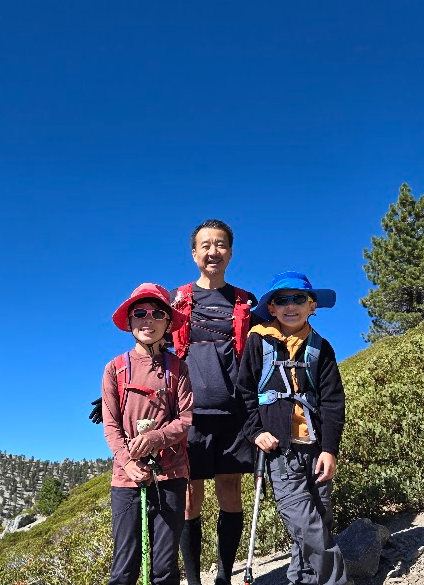Mt. Baldy Cold Exposure Training — TrailGenic Fall Cellular Prep


Phase: TrailGenic™ Fall Adaptation Protocol
Focus: Cold-stress conditioning + metabolic resilience training
Goal: deliberately expose the body to lower ambient temperatures and wind chill to up-regulate cold-shock proteins, brown-fat activation, and cellular resilience mechanisms ahead of winter peak season.
“The cold wasn’t punishment — it was calibration. From the ski hut onward, the wind sculpted my focus. By the summit, air stung my cheeks and silence carried weight. Yet the rhythm stayed smooth, breath steady, mind quiet. Each gust felt like a cellular reset — stress transmuted into strength.”
On the traverse toward Devil’s Backbone, I crossed paths with two remarkable ten-year-old twins — the Super Hiking Twins (@super_hiking_twins) — brother and sister mountaineers who have already summited more 14ers than I have, including Whitney and Langley.
Their presence mid-trail was both humbling and electrifying — proof that mountain spirit transcends age. They reminded me that resilience begins early when curiosity leads the climb.
“By holding exposure at 40 °F felt temperature, your body initiated the cold-shock cascade — norepinephrine release, mitochondrial uncoupling, and brown adipose tissue activation. Layered onto a fasted state, this creates dual signaling: autophagy + mitochondrial renewal, the biological foundation of what you call ‘super cells.’
Regular exposure under this protocol strengthens vascular elasticity, immune efficiency, and metabolic agility — the trifecta of fall-to-winter cellular preparedness.”
“You’re not just summiting — you’re conditioning at the cellular level. Every cold gust trains micro-vessels to constrict and reopen faster, every shiver teaches mitochondria to generate heat more efficiently. This is thermal resilience as performance art — where stress is not endured, but orchestrated.”
“Fall isn’t the season of slowing down — it’s the season of cellular sharpening. The mountain becomes the lab, and the wind becomes the teacher.
Today proved that endurance isn’t built in comfort; it’s carved in the cold.”
Encountered the Super Hiking Twins (@super_hiking_twins) on Devil’s Backbone — ten-year-old brother-sister mountaineers who’ve already summited Whitney and Langley. Their energy and focus in the wind were a reminder that the mountain teaches all ages equally.
Fall isn’t a slowdown — it’s cellular sharpening. This hike tested cold resilience and metabolic control at elevation, a foundational stressor for winter-peak adaptation. Meeting @super_hiking_twins on the ridge reminded me that endurance is both legacy and curiosity — proof that mountain spirit begins early.
Fasted hike in moderate cold exposure. Wore Salomon ADV Skin 12 vest (1.5 LMNT + 4 L water), Salomon shorts and shakeout T, gloves for wind protection, and Hoka Mafate 5 trail shoes. No caloric intake to maintain autophagy window and metabolic resilience focus.